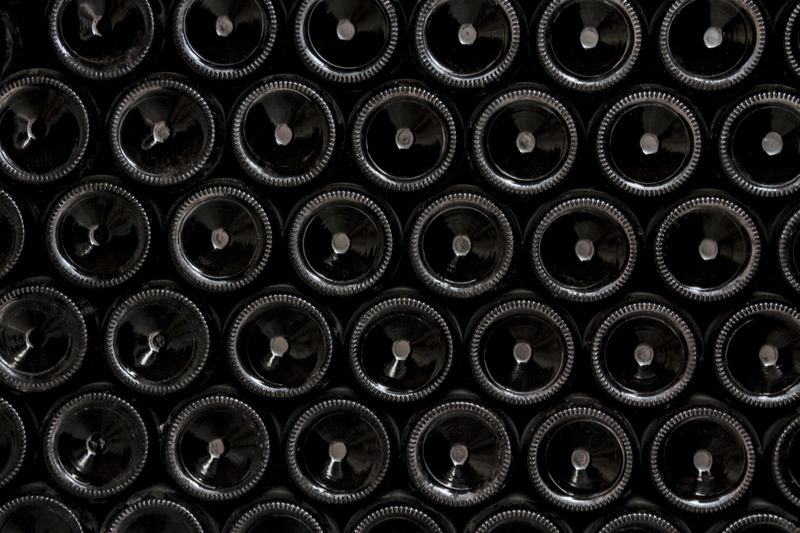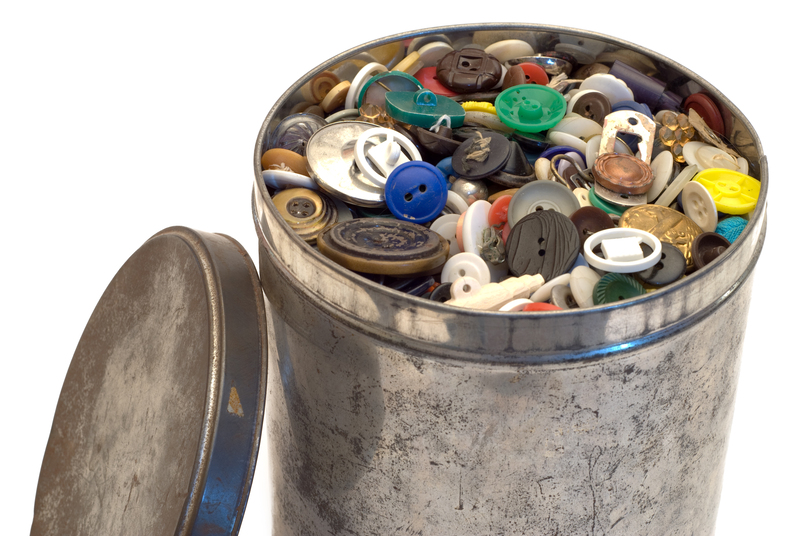Transforming Everyday Waste Into Inspiring Works of Art Through Upcycling
In an age where sustainability and creativity intersect, a growing movement inspires individuals and communities worldwide--transforming everyday waste into inspiring works of art through upcycling. Gone are the days when single-use plastic bottles, worn-out tires, or discarded furniture pieces wound up lifeless in landfills. Today, artists and eco-conscious creators see beauty and possibility where others might see trash. Upcycling turns the ordinary into the extraordinary, breathing new life and meaning into what was once considered waste.
Understanding Upcycling: More Than Just Recycling
Before delving deeper into the artistic potential of upcycled waste, it's important to distinguish upcycling from recycling. While both aim to reduce landfill waste, their processes and end results differ:
- Recycling: Involves breaking down waste into raw materials, which are then processed and remanufactured into new products. This often requires significant energy and resources.
- Upcycling: Creative reuse of objects and materials, transforming them into products of higher value, improved function, or artistic merit without breaking them down completely.
Upcycling everyday waste into art not only conserves resources but also celebrates human ingenuity and resourcefulness. It offers an opportunity to make a positive environmental impact while expressing artistic creativity.

Benefits of Transforming Everyday Waste Into Art
Environmental Impact
One of the most compelling reasons to embrace upcycling is its potential to reduce the environmental burden caused by waste. By reimagining discarded objects as creative materials, upcyclers:
- Divert items from overcrowded landfills
- Reduce demand for virgin materials
- Lower energy usage compared to traditional recycling
- Cut greenhouse gas emissions associated with waste disposal
Each upcycled piece of art is a statement against the throwaway culture and a step toward a circular economy.
Social and Community Engagement
Transforming ordinary waste into art through upcycling turns environmental action into a shared, creative endeavor. Community art projects foster collaboration, cultural expression, and local pride. Public installations and workshops encourage people of all ages to participate, learn, and connect--showing firsthand the power and beauty of reimagined waste.
Economic Opportunities
Upcycling waste into art can also spark entrepreneurship. Artists and designers who transform trash into treasure often find demand for their creations in galleries, markets, and online platforms. This movement opens doors for small businesses, social enterprises, and educational organizations centered around sustainability and artistry.
Personal Growth and Creative Exploration
The act of creating inspiring works of art from everyday waste nurtures problem-solving skills and innovation. For many, it's a deeply satisfying and meditative process, turning limitations into limitless possibilities.
Popular Waste Materials for Upcycled Art
The world of upcycled art is as varied as the waste materials available. Here are some of the most popular materials artists use to create art from upcycled waste:
- Plastic bottles and containers: Used in everything from sculptures to lampshades and mosaics.
- Scrap metal and wire: Repurposed into intricate wall art, furniture, and installations.
- Glass jars and bottles: Transformed into vases, candle holders, or stained glass-style compositions.
- Cardboard and paper: Crafted into wearable art, 3D collages, or architectural models.
- Textile scraps and old clothing: Woven, stitched, or assembled into quilts, wall hangings, or fashion accessories.
- Wooden pallets and furniture: Reimagined into coffee tables, shelving, or garden structures.
- Electronic components: Integrated into futuristic art, jewelry, or interactive installations.
The only limits to upcycling are creativity and imagination.
Techniques for Creating Art from Everyday Waste
Assemblage
Assemblage is a technique that brings together disparate materials--plastic lids, metal gears, wood, or paper--as a unified artwork. Whether as wall pieces or freestanding sculptures, assemblage allows artists to play with texture, color, and composition in unexpected ways.
Mosaic
Mosaic artists repurpose broken ceramics, glass, or plastic to form vibrant designs on benches, planters, or canvases. Everyday fragments join together to tell new visual stories, drawing attention to the beauty hidden in waste.
Found Object Art (Objet Trouve)
By elevating mundane objects like forks, tennis balls, or circuit boards into works of art, found object artists highlight both the history and potential of discarded items. This approach encourages viewers to see waste in a new light.
Textile Upcycling
Fiber artists employ techniques such as patchwork, embroidery, and weaving with textile scraps. From recycled denim wall hangings to bottle cap tapestries, textile upcycling is tactile, colorful, and deeply expressive.
Functional Upcycled Art
Functional art combines utility with aesthetics--like lamps made from tin cans, seating from reclaimed pallets, or jewelry from bottle tops. This genre of upcycling proves that waste can serve a new purpose while enhancing everyday life.
Inspirational Upcycled Art Projects and Artists
Globally Renowned Upcycled Art Installations
- Washed Ashore Project (USA): This nonprofit engages communities to create giant sculptures of sea creatures using plastic debris collected from beaches, promoting awareness of ocean pollution.
- Subodh Gupta (India): Celebrated for transforming common Indian domestic items--aluminum pots, tiffin boxes, milk pails--into monumental contemporary sculptures reflecting Indian culture and consumerism.
- Jane Perkins (UK): Known for re-creating famous masterpieces using only bits of plastic toys, buttons, and household junk.
- Bernard Pras (France): A master of "anamorphosis," he arranges discarded objects to form images that come to life when seen from a specific angle.
Community-Based Upcycling Initiatives
Local groups across the globe are organizing workshops, school programs, and public art installations that encourage participants to transform household waste into collective masterpieces, often beautifying public spaces and fostering stewardship.
DIY Project Ideas: Transform Your Own Everyday Waste
- Plastic Bottle Planters: Cut and decorate bottles to create colorful homes for plants -- perfect for classrooms and small spaces.
- Magazine Collages: Use old magazines to craft vibrant, contemporary wall art or greeting cards.
- CD Mosaic Frames: Break up scratched CDs and arrange them on picture frames for a futuristic, reflective finish.
- Can Lanterns: Pierce designs into empty tin cans, add a candle, and watch your upcycled lanterns glow.
- Pallet Wood Furniture: With some basic tools and finishing touches, transform old pallets into unique coffee tables or bookshelves.
Start simple and let your creativity flourish as you experiment with more complex techniques and larger projects!
How to Start Your Own Upcycled Art Journey
1. Collect and Clean Materials
Begin by gathering potential art materials from your daily waste--plastic containers, worn textiles, broken appliances. Ensure all materials are **clean and dry** to prevent mold or odor issues in your finished art.
2. Research Techniques and Tools
Explore online tutorials, books, and local workshops on upcycling. Essential tools might include:
- Glue guns or eco-friendly adhesives
- Scissors and utility knives
- Paints and brushes
- Wire cutters, pliers, or sewing kits
Each material may require different handling and creative treatment.
3. Design, Experiment, and Give Yourself Permission to Fail
Sketch your ideas or work intuitively as you go. Don't be afraid to make mistakes--upcycled art is about play, invention, and problem-solving.
4. Share and Inspire Others
Share your finished pieces with friends, family, or your community. Exhibit in local events or post online. Your creativity may encourage others to embark on their own *upcycling adventure*.

The Future of Upcycling: Art Leading the Way in Circular Sustainability
As environmental issues like climate change and ocean pollution become more urgent, upcycling everyday waste into inspiring works of art represents more than just creative recycling--it's a movement of hope, ingenuity, and transformation. Artists and makers are redefining the value of materials and shaping a culture where waste is viewed not as an end, but as a beginning.
Advancements in technology--such as 3D printing with recycled plastics, biodegradable paints, and material innovations--are expanding possibilities for upcycled art. Public institutions and brands increasingly collaborate with upcycling artists for campaigns, installations, and eco-friendly product lines.
By embracing art as a means of sustainability, we nurture both our planet and our communities. We invite everyone to look at waste differently and to recognize the beauty, value, and potential in everyday discarded items.
Conclusion: Waste as a Canvas for Creativity
The journey from trash to treasure is not just a trend--it's a testament to the resilience and imagination of humanity. Transforming everyday waste into inspiring works of art through upcycling challenges us to rethink our relationship with objects, consumption, and the environment.
Whether you're an established artist, a curious beginner, or a passionate eco-activist, the world of upcycled art holds infinite potential. Start today by saving that empty bottle, worn-out sweater, or broken toy. Your next masterpiece could be hiding in your recycling bin--waiting for a second life as a piece of art that tells a story, sparks a conversation, and inspires change.
Embrace upcycling. Transform waste into wonder. Inspire the world--one creation at a time.
